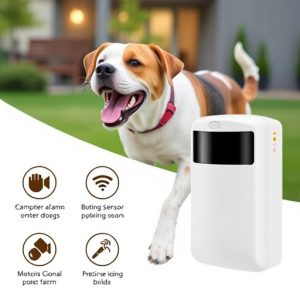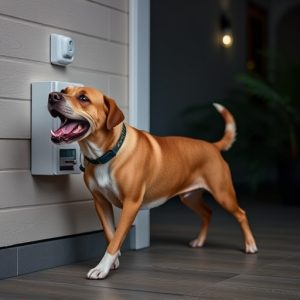Secure Your Home: Motion Sensors & Barking Dog Alarms Explained
Motion sensors, like the innovative barking dog alarm, enhance home security by detecting individual…….
Motion sensors, like the innovative barking dog alarm, enhance home security by detecting individuals and pets while reducing false alarms. This technology combines artificial dog barks with sensitive sensors to alert homeowners of intrusions without adopting a real pet. Setting up a custom home alarm system involves assessing entry points, choosing a control panel with adjustable sensitivity, and strategically placing sensors for optimal protection, ensuring peace of mind and minimizing false triggers.
“Strengthen your home’s security with the latest in smart surveillance—the motion sensor barking dog alarm system. This comprehensive guide delves into the heart of these innovative systems, exploring how advanced motion sensors detect intrusions and a unique barking dog feature adds an extra layer of protection. Learn how to integrate this technology seamlessly, customize settings for peace of mind, and transform your home’s security with our step-by-step setup guide.”
Understanding Motion Sensors: The Core of Your Alarm System
Motion sensors are a crucial component of any comprehensive home alarm system, acting as the first line of defense against intruders. These devices use advanced technology to detect movement within a specified range, triggering an alert when unusual activity is sensed. The modern motion sensor goes beyond simple movement detection; it can distinguish between people, pets, and even weather conditions, ensuring false alarms are minimised.
One specific type, the barking dog alarm, combines motion sensing with audio cues to deter potential thieves. This innovative feature mimics a dog’s bark, scaring off intruders without relying solely on loud sirens. Such sensors offer peace of mind by providing an extra layer of security, allowing homeowners to customize their alarm settings for optimal protection while ensuring minimal disruption from false triggers, especially when there are pets or children in the home.
Integrating a Barking Dog Alarm: Enhancing Security with a Unique Approach
Integrating a barking dog alarm into your home’s security system offers a unique and creative approach to deterring intruders. This innovative device utilizes motion sensors combined with an artificial bark to alert you and potential invaders of any unauthorized presence. When a sensor detects movement, the alarm triggers a realistic dog bark, effectively scaring off would-be thieves and providing an added layer of protection for your property.
The barking dog alarm is particularly useful as a deterrent, as it mimics the presence of a real dog without requiring you to adopt or care for a pet. This solution is ideal for those who love the idea of having a protective companion but have time constraints or specific lifestyle needs that make traditional pet ownership challenging. By combining advanced technology with the power of nature’s alarm call, this device offers an intriguing and effective way to enhance your home security.
Setting Up and Customizing Your Home Alarm System: A Step-by-Step Guide
Setting up a home alarm system can seem daunting, but with a structured approach, it becomes an achievable task. Start by assessing your home’s layout and identifying potential entry points—windows, doors, and even pet access points like cat flaps. This step is crucial as it helps determine the placement of sensors, including motion sensors that detect any unwanted visitors or curious pets, such as a barking dog.
Next, choose a control panel that suits your needs. These panels are the brain of your alarm system, allowing you to arm and disarm it, monitor sensors, and often even control smart home devices remotely. Customization is key; set sensitivity levels for motion sensors, program specific zones, and integrate any existing security cameras for enhanced surveillance. Ensure all sensors are placed strategically, taking into account the height and movement of potential intruders or animals. Test the system regularly to ensure every component functions as intended, providing peace of mind that your home is secure.


